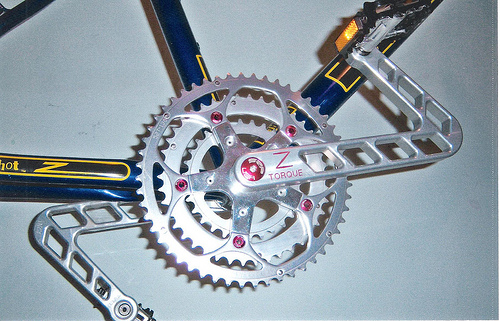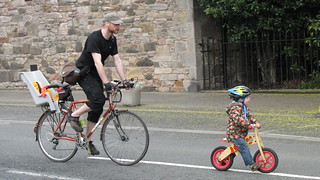the shyt list
Dear all, just finished amusing myself with this article, please do feel free to add your own to the list.
Some are just plain daft.
Enjoy
RW
CityCyclingEdinburgh was launched on the 27th of October 2009 as "an experiment".
IT’S TRUE!
CCE is 16years old!
Well done to ALL posters
It soon became useful and entertaining. There are regular posters, people who add useful info occasionally and plenty more who drop by to watch. That's fine. If you want to add news/comments it's easy to register and become a member.
RULES No personal insults. No swearing.

the shyt list
Dear all, just finished amusing myself with this article, please do feel free to add your own to the list.
Some are just plain daft.
Enjoy
RW
Surprised bar ends made it on there, a lot of people find them very useful for adding an extra couple of potential hand positions to a flat-barred bike.
I’d love to know who it was who kicked the bar end thing off because whoever it was must have been some kind of marketing genius.
Kent Eriksen invented bar ends in about 1985, shortly followed by Joe Murray.
The article is dead right about the Onza HO pedals though. They were really awful.
I suppose some things will always seem sensible "outside" the world of MTBing, such as using the brake lever as a shift lever and fingerless gloves, but might seem daft in practice for the former.
The great thing about cycling kit is that it exists in a highly Darwinian environment. Because the customer has to actually power the machine by their own effort they won't put up with any crap. Poor kit is stripped and binned or simply vanishes off the market as soon as there's a better version. EverReady front light anybody? Metal mudguards?
I suspect derailleur gears and steel chains are about to go the same way...
I suspect derailleur gears and steel chains are about to go the same way...
This Alfine 11 belt drive example is already ticking a few boxes in that direction. Problem is that it costs many times the average bike price. Bike here was not sold by me - just someone showing me out of interest.

Bike Friday Silk with belt drive by LaidBackBikes, on Flickr
Chain drives and derailleurs are safe until hub gears present an option that matches the gear range of derailleurs *and* is either comparably cheap or completely reliable, the experiences of a certain Dave of this parish would suggest that they have a long way to go yet.
I love the idea of belt drives, but unless they solve the hub cost/reliability problems and create one which splits to allow it's use on frames designed for chains then I cannot see them taking off.
Shame, but that's what I reckon they need!
Bar ends, really? For intense mountain biking I suppose, though I've considered putting the tiny stubby bar ends on for all day epics - halfway through you're naturally cupping the end of the bar on climbs anyway, that's the position your hand wants to be in. For a flat bar tourer or workhorse bike bar ends are truly essential for any hope of comfort on longer rides. A nice long bar end curving in at the top paired with a fat ergonomic grip to resemble this is supremely comfortable, even more so than drop bars I've found (heresy!).
I suspect derailleur gears and steel chains are about to go the same way
I suspect this has been said every time anybody releases a new belt drive/hub gear/shaft drive etc. I think it's madness how the solution to an exposed chain is an equally exposed belt drive, the classic dutch bike after all has a completely enclosed chaincase and as I understand a near limitless chain life. I've been wondering why nobody has ever tried to make a lightweight plastic chaincase for derailleur gears yet, that would seem to be the best of both worlds - cheapness, reliability of a conventional drivetrain, but safely tucked away from the constant onslaught of filth.
One for the list though - cup and cone bottom brackets. Ugh.
I'm not so sure that hub gears (in current form) offer the complete future. Certainly I had some and then went back very happily to derailleurs. Depends on usage and each to their own etc.
Tube-encased propshaft leading directly from the equivalent-of-the-BB to the rear hub?
I still reckon a shortly-forthcoming Amazing New Expensive Thing will be frames custom-grown from bone, proteins and biological structural polymers.
Wow, I didn't know I was wrong to fit and like my bar ends! I'm unlikely to get a flat barred bike in the future but if I did I would get bar ends again.
I quite liked gripshift on the commuter as well when it was flat barred, fewer sticky out breakable bits for the train and shifted fine when set up properly :-)
Of course if we were "proper" mtb riders it would all be different... :-D
Chains, derailleurs and sprockets are cheap, efficient, reliable and very user servicable.
I think replacement alternatives( belts, hubs, shafts) have some niche uses but will struggle to match their all-round appeal and therefore fail to displace them in a significant way.
I'd still love a Klein Mantra, especially in the pearlescent green the high end ones came in, designed to be full suspension with a rigid fork, people just wouldn't believe it could work.
I fitted bar ends on my last bike but one, and I loved them. They were invaluable in making my cheap mountain bike feel more like a comfy upright Dutch bike! (Just fit them pointing backwards and outwards instead of forwards and inwards...)
Before we worry about chain vs belt vs shaft drive, we need to sort the biggest flaw with the bicycle drivetrain, which is obviously the shape of the crank:

We've been doing it wrong all this time.
Thanks for sharing that Allebong! Go faster cranks....
I've been wondering why nobody has ever tried to make a lightweight plastic chaincase for derailleur gears yet,
Arellcat's Quest Velomobile ;-)
Chain is all inside and the rear mech even has its own inspection panel.
and what a lovely shiny chain lurks inside :) I'd put up a photo of my chain but I imagine we've all seen enough muck this month already.
The z cranks are pretty sensible compared to some other proposals and attempts over the years. The great thing about the history of cycling is that pretty much any crazy idea that comes up today has already been tried with predictable results (or, sometimes unpredictable). I'm trying to remember this drive idea that was supposed to emulate walking, so your feet would be going straight back and forth on each side, linked to the back wheel by massive crank levers. It was the 'brainchild' of one eccentric bloke who was naturally convinced it would change the world, if only the rest of us fools would listen, save the people he did convince to try it and who (get ready for this) thought it both pointless and painful.
Shaft drive is one of those ideas that is extremely simple and elegant on paper and then becomes a nightmare when you try to engineer it. Even fairly weak riders put out a surprising amount of torque into the cranks, which has to go through 2 gearboxes, both of which have to be small and light, the shaft itself is going to twist and lose efficiency in the process, then you have to make sure it all stays aligned so the gears don't wreck themselves. You can sort all that out, then end up with something still no better (and in many ways worse) than a chaincase.
1970's suicide levers
Kirk magnesium frames
Long black socks
Overly-ductile alloys.
Zinc-plated corrodable hardware.
"drive idea that was supposed to emulate walking, so your feet would be going straight back and forth on each side, linked to the back wheel by massive crank levers"
Wasn't that Kirkpatrick MacMillan's idea?
How about getting rid of the drive chain altogether and propelling yourself by pushing your feet off the ground? The next stage after that would be to get rid of the pesky bike and .... er ... walk.
It's probably only a matter of time before someone comes up with an electric transmission bike where the BB contains a generator linked to a motor in the rear hub, connected by wires, all in an effort to get rid of that pesky, efficient chain.
"...emulate walking..."
Except without the whole moving-forward-by-pivoting-off-your-back-foot-and-stopping-yourself-overbalancing-with-the-front-foot thing. The path taken by the feet when walking might be fine for walking but it's not massively easy to exert great forces in the directions in which the feet happen to travel. Pedalling as it stands at the moment is as good as anything for harnessing the big push downwards by swinging the leg backwards as when running.
"...where the BB contains a generator linked to a motor in the rear hub, connected by wires, all in an effort to get rid of that pesky, efficient chain."
How about a twin-hulled tyre protruding either side of a central toothed rim, driven by a gear mounted where the wheel comes closest to the seat tube, driven by a shaft going up the seat tube from the BB, via appropriate gearing? Perhaps with a brush arrangement so that pesky grime is brushed off the teeth before they interact with the drive-cog.
Of course if we were "proper" mtb riders it would all be different... :-D
Maybe! Or MTB riders that are so spoiled that they don't ever have to ride for a few miles on roads or landrover tracks, especially at the end of the day when you are tired and want to shift your position a bit.
(I didn't even know what most of other stuff was mind you)
It's probably only a matter of time before someone comes up with an electric transmission bike where the BB contains a generator linked to a motor in the rear hub, connected by wires, all in an effort to get rid of that pesky, efficient chain.
Then all you need to add is another couple of wheels for stability and wham, the perfect bicycle.
@Min, you're doing it all wrong, you drive your SUV to the start of the gnarly/rad/hardcore/extreme off road path, erm sorry, trail, before getting onto two wheels and being a proper mtb'er. Roads are dangerous dontcha know?
;-)
Aluminium frames until they worked out how to do them right.
Brakes with straddle-wires and nothing to prevent them catching on the tyre if the cable snaps.
Wheels with big gaps between the spokes that wildlife can get caught in.
Chromium plating which rusts and comes off in pieces like razor-blades.
Solid tyres.
"Chains, derailleurs and sprockets are cheap, efficient, reliable and very user servicable."
I'm caught here by the fact that I completely agree and completely disagree. They are reliable and they are user-serviceable....but only as long as;
1) You're interested in maintaining them.
2) You've time to maintain them.
3) You're competent to maintain them.
There's a whole parcel of bicyclists don't fall into all three of those categories. I'll spend a day rebuilding a bike and count it as leisure, but it would be great if there were bikes that didn't require you to understand them or get dirty.
No one defrags the hard drive on an iPhone, no one adjusts the timing on their motor car and no one takes their holiday snaps to the chemist any more. It would be great to have the world's top engineers work on making the bicycle something you get on and pedal, day in day out.
That list has been written a by a very particular subset of mountain biker - hopefully with their tongue pretty firmly in their cheek.
On maintaining derailleurs I had an epiphany when changing from 3x9 to 1x10. Only having one derailleur makes everything SO much simpler. Like to the point of almost being idiot proof. It wouldn't take much of a design jump to makethem truly serviceable by anyone.
@Kaputnik - old news on the crank driven alternator...
Robert
You must log in to post.

 Cycling in Edinburgh Flickr group
Cycling in Edinburgh Flickr group
Video embedded using Easy Video Embed plugin